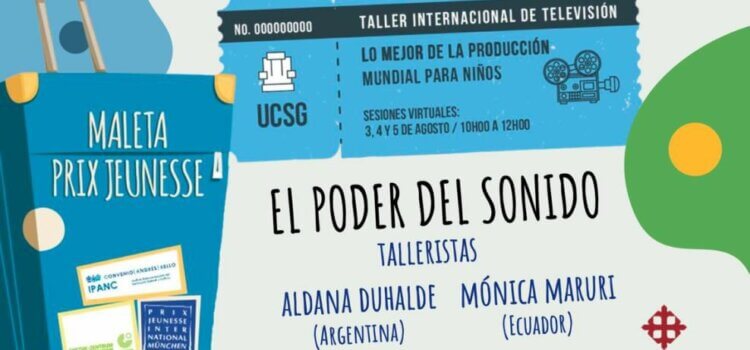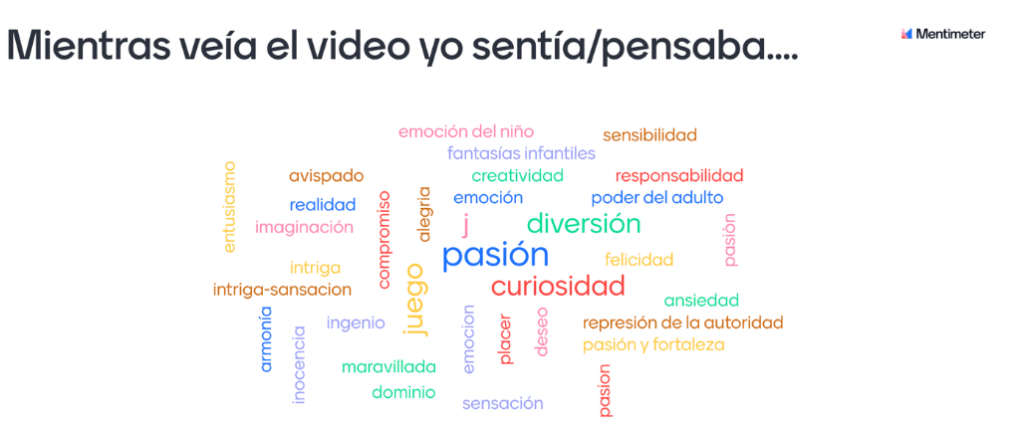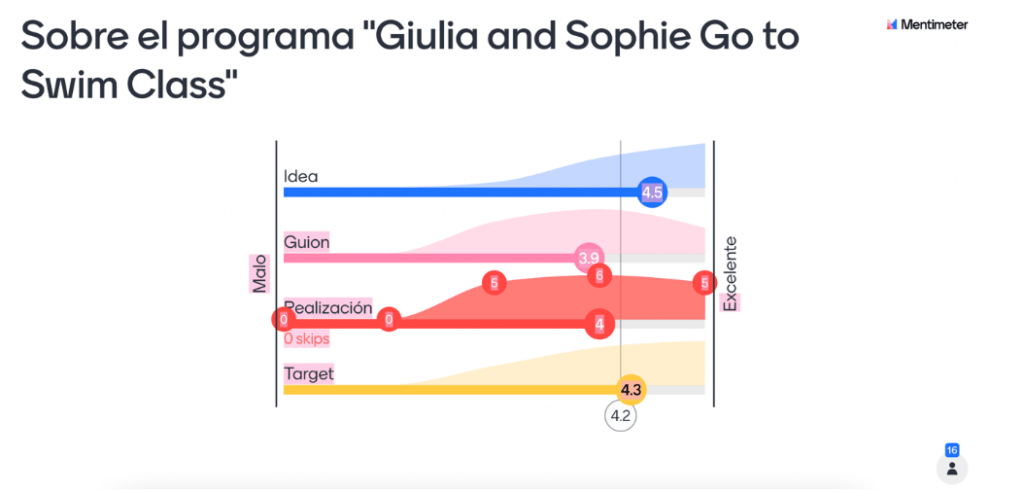
PRIX JEUNESSE Suitcase Workshop at the Catholic University of Guayaquil: “The Power of Sound”
For a long time, the PRIX JEUNESSE Suitcase has been a training tool that carries the creative and challenging atmosphere of the festival around the world. The Suitcase contains a sample of the best and most innovative children’s programs presented at each PRIX JEUNESSE festival.
However, for 2021 the IPANC, in alliance with the Humboldt Association of Quito-Ecuador, agreed to hold a workshop with the Santiago de Guayaquil Catholic University, under a different scheme, keeping as a common thread the main theme of the (original) PRIX JEUNESSE 2020 Festival, around sound and music: THE POWER OF SOUND: let’s listen to the TV that children listen to.
Everything happened online because of the Covid-19 distancing. The idea was to select a specific number of pieces, which would be reviewed as a case study, delving into the identification of the use of sound as one of the most important dimensions in the contact between audiences and audiovisual content.
The proposal, aimed mainly at students of childhood education, communication and audiovisual production in the city, would be addressed during 3 sessions of 2 hours, on several days. 76 attendees participated.
The workshops were moderated by Aldana Duhalde, from Argentina; who has worked as a format developer and scriptwriter, having been Director of Content for Canal Pakapaka in Argentina, when formats such as ‘Cazadores de Sonido’, the news program ‘PakaData’, the animation series ‘Petit’ and the Strong Stories for Strong Children project were developed.
Along with her would be Mónica Maruri, Director and Producer of audiovisual content for children, university teacher and former Manager of the first educational television in Ecuador, “Educa, television to learn”. She is currently the Executive Director of the Heritage Institute of the Organization of the Andrés Bello Agreement, IPANC.
The workshop invited you to immerse yourself in a dimension that is generally ignored in content analysis, under the slogan “SOUND AND MUSIC: OTHER SENSORY MEMORIES”.
The axes were: Specific sound for childhood in fiction and non-fiction; Scientific programs on sound; Sound and music as thematic axes of content; Particular characteristics in the treatments according to gender and targets.
The following were the topics and contents selected as a case study:
1st session – Understand that sounds are, or can be, as powerful and important as images.
- “Sound hunters” (Argentina)
- “Behind the Rainbow” (South Africa)
2nd session – How sound and music are complementary narratives to better build a story.
- “Three feet” (Colombia)
- “Hardball” (Australia)
- “Guiulia and Sophie go to swim class” (Holland)
3rd session – Pieces that do not need dialogues to tell the story.
- “Songfony” (Norway)
- “Tee and Mo” (Canada)
- “Pitagoras Switch” (Japan)
The workshop took place on August 3, 4 and 5, 2021.
As an innovation in the methodology, a more active participation of the public was included, given the on-line context of the workshop and the Mentimeter tool was used to carry out a virtual “live” survey:


This made it possible to obtain in virtual form the usual evaluations of the PRIX JEUNESSE Suitcase workshops, generating a greater commitment from the attendees.
The final evaluations were highly positive, and the feedback obtained identifies a high level of understanding and knowledge acquired by those who participated in the workshop:
“I really liked learning about the importance of all sounds, I study early childhood education and the truth is that implementing music from a very young age awakens different emotions in children in addition to the creativity of discovering new sounds.” (Testimony of a participant)
The experience allowed us to discover the importance and subtlety of sound for the construction of meaning and how this narrative, artistic and informative resource can have an impact to bring cultural diversities and identities to the fore from the emotional, the sensory and the experiential. For this time, the image did not beat audio in the appreciation of the audio-visual language and opened the way to a deeper and more definitive awareness of the immense power that sound implies when developing content.
Mónica Maruri
Aldana Duhalde
